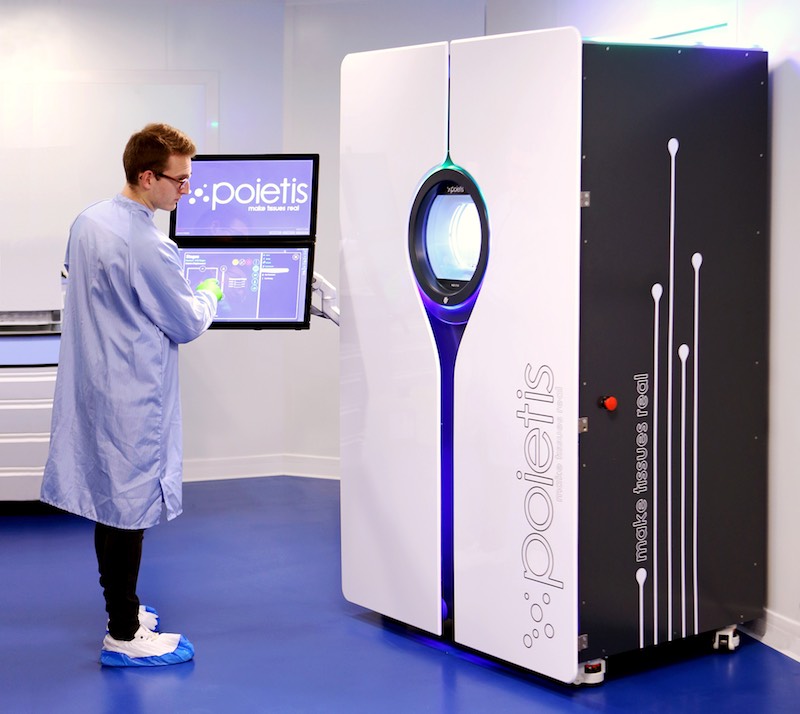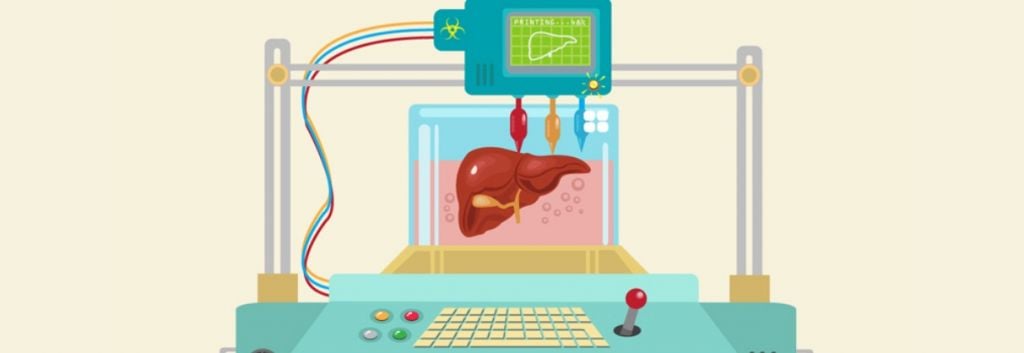Newsletter Signup - Under Article / In Page
"*" indicates required fields
Poietis has partnered with the pharma company Servier to develop a 4D bioprinted liver model that could predict liver toxicity of drugs better than current methods.
Liver toxicity testing is one of the key tests that are performed during preclinical trials with investigational drugs. “The role of the liver is to degrade substances toxic to the body into non-toxic products but sometimes the toxicity is too high and creates important liver lesions,” Bruno Brisson, co-founder of Poietis, told me.
Animal models and cell cultures of human liver cells are often used to predict toxicity, but their accuracy is limited given they can’t fully replicate the processes that happen in a real human liver.
Using Poietis’ bioprinting techniques, Servier aims to obtain a test that can better predict toxicity. The liver model will contain different types of human liver cells and immune cells that are distributed three-dimensionally with high precision thanks to the company’s laser-assisted bioprinting technology.
“Most in vitro liver models for drug analysis are produced with a two-dimensional single layer cell tissue, but this new three-dimensional model mimics the complicated multicellular tissue structure of the liver. That is critical for investigating drug toxicity,” Brisson explained.
The model will be validated by testing a panel of compounds that are well-known to induce, or not induce, liver toxicity. Brisson expects to have a product ready in about 18 months.

In recent years, many players have started turning to 3D bioprinting for drug testing, with the most popular application so far being in skin models for testing cosmetics. The beauty giant L’Oréal partnered with US-based bioprinting company Organovo in 2015, and Poietis recently launched a commercial skin model for cosmetic applications.
“Poietis 4D laser bioprinting technology provides a strong differentiation over other bioprinting technologies especially in producing tissues with high precision and single-cell resolution,” said Brisson.
The field is now moving towards more complex organs where bioprinting could help improve the accuracy of in vitro models, or even recreate full organs for transplantation. Poietis itself is collaborating with the Katholieke Universiteit Leuven to bioprint cartilage tissue for tissue repair. Another example is the Russian company 3D Bioprinting Solutions, which has created the first bioprinted thyroid gland.
Images via Shutterstock; Poietis






